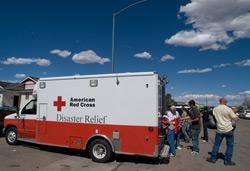research
In Sandy's Wake, Brands Need Disaster Preparedness
- by Sarah Mahoney @mahoney_sarah, September 3, 2013

With the first anniversary of Hurricane Sandy approaching, brands need to rethink their response to disaster relief efforts, according to new research from Cone Communications.
Some 90% of global consumers now expect companies to play a role in such efforts, and 69% think corporations are actually better equipped to help than government. And 87% say those efforts should be long-term.
That means that when disasters do hit regions where they do business, it’s not a question of if a brand should respond, but how, says Craig Bida, Cone’s EVP for social impact.
Defining disasters from a brand perspective isn’t cut and dried, and can include anything from wildfires and flooding to power-plant meltdowns to the Boston Marathon bombing. “Brands need to ask themselves if the communities and individuals they serve are being affected,” he tells Marketing Daily. “And companies with a global base have a greater requirement to respond to events all around the world.
advertisement
advertisement
When companies do pitch in, 91% of those in the survey say they have a better impression of that company. In addition, 54% say they have themselves participated in corporate disaster recovery efforts. (The research is based on responses from 10,000 adults in 10 countries, including the U.S., Canada, Brazil, the U.K., Germany, France, Russia, China, India and Japan.)
The survey found the need for brand response is highest in China, which has been plagued by disasters in recent years, as well as in India, which has experienced intense flooding, and Japan, with its recent earthquake.
“Citizens in these countries were significantly more likely to perceive companies as better equipped than government to respond to disasters (85% and 80%, respectively, vs. 69% global average),” the report says.
In addition to the basics, including checking in with seasoned responders, such as the Red Cross, before barreling in with the wrong kind of donations (sending tons of dog food when what was really needed was bottled water), “companies also need to walk the line between communicating their efforts sufficiently through social media and other channels, so people know they are doing something, and over-communicating, which can seem exploitive.”
It’s also important to make sure responses are brand-appropriate, and follow common sense, respectful rules. “I used to work on Procter & Gamble’s Duracell batteries, for example. It’s very natural for Duracell to jump into a disaster situation. No one ever says, ‘This is exploitive.’ They say, 'Thanks for the batteries!’”
Finally, he says, brands shouldn’t just give and run, and he points out that almost a year later, brands are still offering meaningful post-Sandy relief efforts.
While Hurricane Sandy crippled the East Coast last year in late October, this year’s hurricane season has been unusually quiet: August went by without a single Atlantic hurricane, the first time that has happened in 11 years.




